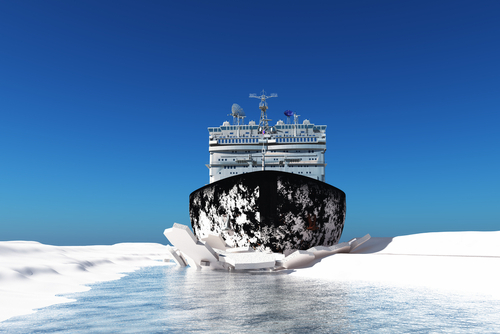Climate scientists at Brown University worked with a legal scholar at the University of Maine School of Law to predict how Arctic Ocean ice melt could affect the regulation of shipping routes over the next few decades.
They projected that by 2065, the Arctic’s navigability will increase so greatly that it could yield new trade routes in international waters, reducing the shipping industry’s carbon footprint, but also weakening Russia’s control over trade in the Arctic.
There’s no scenario in which melting ice in the Arctic is good news. But the unfortunate reality is that the ice is already retreating, these routes are opening up, and we need to start thinking critically about the legal, environmental and geopolitical implications
said Amanda Lynch, the study’s lead author and a professor of Earth, environmental and planetary sciences at Brown.
[smlsubform prepend=”GET THE SAFETY4SEA IN YOUR INBOX!” showname=false emailtxt=”” emailholder=”Enter your email address” showsubmit=true submittxt=”Submit” jsthanks=false thankyou=”Thank you for subscribing to our mailing list”]
Ms. Lynch worked with Xueke Li, a postdoctoral research associate at the Institute at Brown for Environment and Society, to model four navigation scenarios based on four likely outcomes of global actions to halt climate change in the coming years. Their projections showed that unless global leaders successfully constrain warming to 1.5 degrees Celsius over the next 43 years, climate change will likely open up several new routes through international waters by the middle of this century.
According to Charles Norchi, director of the Center for Oceans and Coastal Law at Maine Law, a visiting scholar at Brown’s Watson Institute for International and Public Affairs, and one of the study’s co-authors, those changes could have major implications for world trade and global politics.
According to Ms. Lynch, previous studies have shown that Arctic routes are 30% to 50% shorter than the Suez Canal and Panama Canal routes, with transit time reduced by an estimated 14 to 20 days. That means that if international Arctic waters warm enough to open up new pathways, shipping companies could reduce their greenhouse gas emissions by about 24% while also saving money and time.
Diversifying trade routes — especially considering new routes that can’t be blocked, because they’re not canals — gives the global shipping infrastructure a lot more resiliency






























































